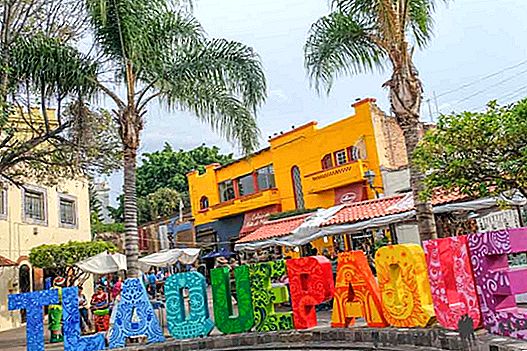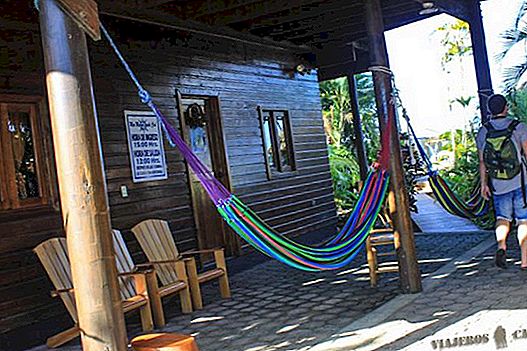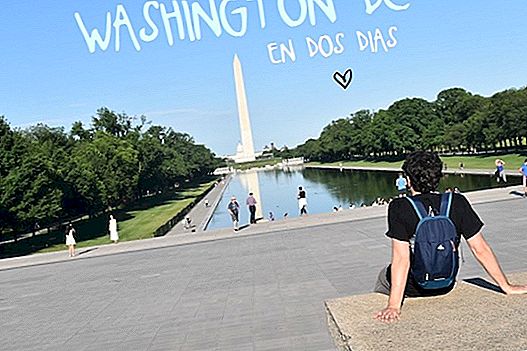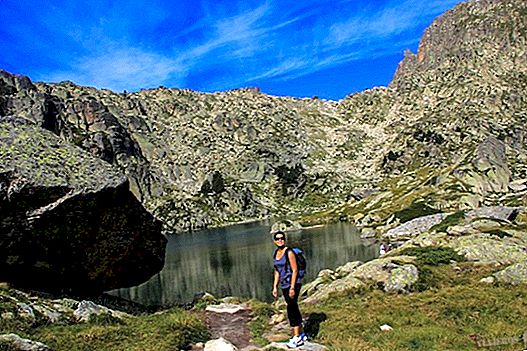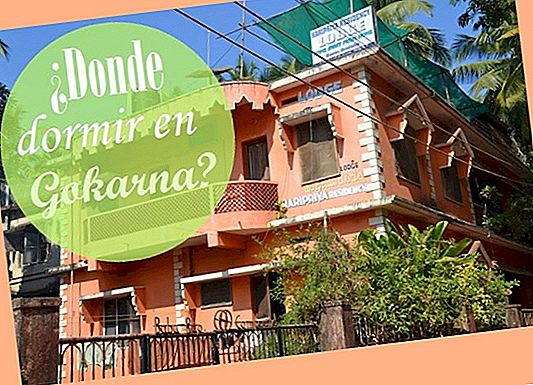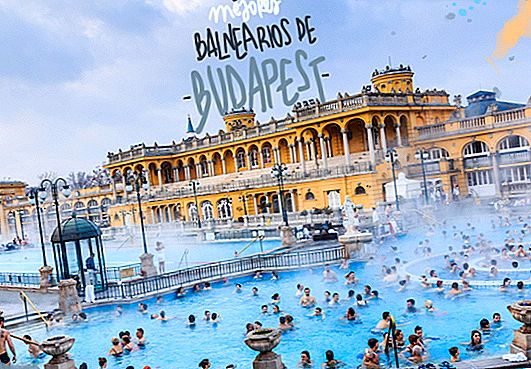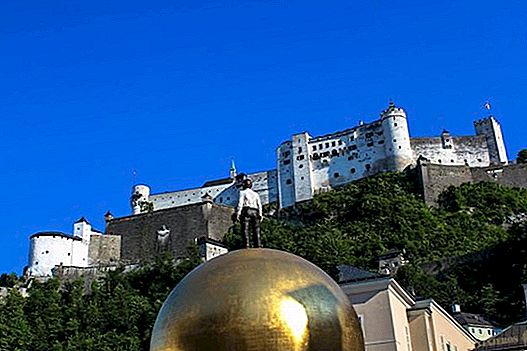
Before knowing a country for the first time, we usually inquire about its history, as it is the best way to understand its culture and its present. Today it's time to talk to you about the Mexico history. What we quickly discover is that, Virgencita de Guadalupe ... how many things have happened! Although we always promise to be brief and in the end we talk more than a corkscrew, this time we have made a mini-summary that we will expand a little more. Come on, if you're vague, you can simply read the first chapter. If you want to know more about the history of Mexico, read the entire post (cheer up, crack!).
The beginning of the history of Mexico goes back to the arrival of the original inhabitants more than 10,000 years ago. Little by little, large towns began to emerge (the Olmec, Teotihuacana, Maya and Mexica or Aztec civilizations stand out), which occupied different and large territories and developed their civilizations. In the fifteenth century the Spaniards arrived and, after a war of conquest, subjected the local Indians and created a viceroyalty (colonial state). Spanish rule lasted until 1821, the year in which Mexico won the War of Independence and created the First Mexican Empire that soon gave way to the First Federal Republic.
Successively new wars arrive, with France and the United States specifically. That is when Mexico loses a large part of its territory in favor of the United States of America (practically the entire southwest coast of the country). The twentieth century is characterized by a great revolution, thanks to which (and not without great losses) Mexico will become a democratic state for all purposes.
Now, for the most applied, here goes our summary of the history of Mexico:
The pre-Columbian era (that is, before the arrival of Columbus) is what scholars define as the first period of Mexican history. In turn, it is divided into 3 sub-periods (Mesoamerican pre-classic, Mesoamerican classic and Mesoamerican post-classic).
Essentially we can say that it is the time of the great civilizations that so much influenced the character, architecture and thoughts of the Mexican people. These civilizations stand out:
♣ Olmec
- Precursor of the other pre-Columbian cultures. There were between 1200 and 500 B.C.
- Located in the coastal region of the Gulf of Mexico.
- They had a calendar and a hieroglyphic writing.
- Famous for the construction of great architectural works, such as the colossal heads that are supposed to represent great warriors of the time.
- Religion was fundamental and the supreme chief was the priest. Of course it was a polytheistic religion (the cult of the jaguar was very strong).
- He disappeared, it is believed, because of an ecological disaster.
♣ Teotihuacana
- It took place between 200 and 650 A.D. and his disappearance is a mystery to historians.
- Unlike the other pre-Columbian civilizations, it concentrated only on one area: the one that corresponds to the remains of the city of Teotihuacán.
- Their religion was polytheistic, they worshiped different gods (Quetzalcoatl was the Serpent God, Huehuetéotl the Fire God, Tlaloc the God of rain, Tezcatlipoca the God of heaven and Earth). Sacrifices were frequent, including humans.
- It was a society that subsisted especially on agriculture and commerce.
- It is assumed that the city of Teotihuacán came to have a population of 200,000 inhabitants, a barbarity in the America of that time. Curiosity: its remains are today the most visited in Mexico.
♣ Maya
- It is one of the most incredible civilizations in the world and has a history of almost 3,000 years.
- They were a super advanced society of their time and developed writing and language, and left important legacies in the architectural, astronomical and mathematical fields.
- While in the past it was thought that the Maya were a theocratic society, today it is believed more logical that the Maya were organized around feudal lords. Trade was something so fundamental to them, they earned the nickname "the Phoenicians of America."
- Of course, religion was a very important aspect in everyday life. The most important Mayan Gods were Hunaj Kú (the Creator God), Itzamná (the God of heaven, night and day), Kukulkán (the God of the wind) and Chac (the God of the rain).
- The Mayans never completely disappeared: today, especially in the Yucatan area, it is a strong and lively culture.
- Since we are going to visit the Yucatan Peninsula and that is deeply influenced by this civilization, we have prepared this post with a few curiosities of the Mayan culture.
♣ Mexica (Aztec)
- Although they are known more as "Aztecs" this term is later since they were called "Mexica".
- They lived in the center of the Valley of Mexico.
- The society was divided into castes, the military and the priests being the highest castes.
- His astrological knowledge was very advanced (they knew the phases of the moon and differentiated the constellations) and also, they gave a lot of importance to art (so that history later crossed them out, for a long time, as barbarians).
- Religion was polytheistic and in this case also sacrifices were common (including humans).
- Its civilization was extinguished in 1521 because of the diseases that the Spaniards carried.
More info:
- //es.wikipedia.org/wiki/Prehispanic Mexico
- //www.caracteristicas.co/civilizacion-maya
- //en.wikipedia.org/wiki/Cultura_maya
It is the time that lasts 3 centuries and that goes from the Arrival of the Spaniards, led by Hernán Cortes (and the consequent fall of the Aztecs) to the Mexico's independence.
The Viceroy's society was hierarchized as follows:
- Guachupines: the Spaniards by birth, who performed important jobs and enjoyed a high status.
- Creoles: children of the guachupines born in the Americas.
- Mestizos: children of people of different geographical backgrounds (usually Spanish father and indigenous mother).
A figure that we found super interesting is that of Gonzalo Guerrero, a Spaniard who was taken prisoner by the Mayans and who, over time, learned to admire this culture so much that he did not hesitate to “change sides” and fight with them. It also reads considered the father of miscegenation since he was the first Spanish to have children with a Mayan woman. We recommend you to read Alfonso Mateo-Sagasta's book "You will walk with the sun" that tells about its history and gives a million facts and information about the time.
You can read this post and this one if you are interested in knowing more about the era of the viceroyalty.
What causes independence? Essentially the causes are two: the first is that inequality in society was becoming stronger. The second was the news that Napoléon Bonaparte had taken Spain: the logical effect was that the power of Spain in the colonies weakened instantly and many took advantage of this circumstance to move on to the attack. Specifically, we must remember the figure of the priest Miguel Hidalgo y Costilla that, on September 16, 1810, together with Ignacio Allende and Juan Aldama, they began the Revolution with the famous “pain scream”(Named for having occurred in the city of Dolores). It consisted of a call to the people to rise in arms against the Viceroyalty.
Although at first the revolutionaries won several victories, in 1811 Hidalgo fell prisoner and was sentenced to death by the Holy Inquisition, this nice organ that did so much good to humanity (ahem, of course). José María Morelos and Pavón and Ignacio López Rayón took the leadership of the independentistas and began a Civil war that faced Creoles (who did not want to give up their privileges) and mestizos and Indians (who wanted a fair society).
Long story short: Morelos succeeded Hidalgo, who was also shot shortly after. The power fell on Vicente Guerrero who fought, between battles and defeats, until his "enemy", General Agustín de Iturbide (Creole) offered him a pact and proclaimed Independence. In August 1821 was born the Mexican Empire and in May of the following year, Iturbide came to power as emperor (under the name of Augustine I).
Independence followed a period of almost constant changes: the Empire lasted 6 months :-p and over the next 60 years there were tens and dozens of people who took command of the country. Crazy.
♣ Wars with France and the United States
Something remarkable of this period were the Spanish attempts to reconquer Mexico (1821-1829) but, as you imagine, they failed. There were also two interventions by the French that demanded payments from the Mexicans: the War of the Pastry (1838-1839) and the War of 1862-1867 (after which Benito Juarez decided to stop paying the foreign debt, and of course, the French did not get very happy). And, of course, we cannot forget the War with the United States, where Mexico lost about 50% of its territories (1846-1848).
♣ Porfiriato and Mexican Revolution
Relative stability began in 1876 when it came to power Porfirio Diaz, which would remain in command of the country until 1910. But don't get confused: stability is not always good, especially if it is a political dictatorship. The good thing about this era (Porfiriato) was that Mexico was modernized. The bad thing is that the dictatorship, as it is obvious, did not like most: social tension was growing stronger, money was concentrated in the hands of a few and led to an inevitable revolution.
More info about the Porfiriato:
- //en.wikipedia.org/wiki/Porfiriato
- //es.wikipedia.org/wiki/Porfirio_Díaz
- //www.mexicodesconocido.com.mx/porfirio-diaz.html
It was the year 1910 and Díaz, having said that he would not be a candidate again, not only does it, but he manages so that his adversary, the true winner (Francisco Madero), is sentenced to jail. The town was already tired.
Madero called the rebellion (Plan of San Luis Potosí) and was supported by leaders such as Emiliano Zapata (do you think the term “Zapatista?) And Pancho Villa. Díaz had to flee to Europe and his dictatorship was over at once.
What happened after? Madero was in power for about 2 years, but in 1913 he was killed. The command was now Victoriano Huerta, but already in 1915 Venustiano Carranza replaced it and in 1917 the Constitution of Mexico. In a few years, all these leaders of the revolution die, and not because of natural causes: the men of Carranza kill Emilio Zapata and those of Álvaro Obregón kill Carranza. Pancho Villa also suffers the same fate. Come on ... a lake of blood. Approximately 2 million people died during the Revolution, a full-fledged Civil War.
More info:
- //www.telesurtv.net/news/importancia-vigencia-ideales-emiliano-zapata-20180410-0014.html
- //es.wikipedia.org/wiki/Revolución_mexicana
- //www.puntadasconhilo.net/2016/12/11/diego-rivera-muralismo-la-revolucion-mexicana/
Emilio Zapata Statue
After the Revolution and until 2000, in Mexico the reformists succeeded (party that later, in the 1940s would be called PRI / Institutional Revolutionary Party). An essential figure is that of Lázaro Cárdenas del Rio, which in 1937 takes command of the country and is responsible for fulfilling several issues that had been discussed for years, first of all the Agrarian Reform. He also nationalized the railroads and expropriated oil (which until then was in the hands of foreign companies). He was one of the best valued presidents in the history of Mexico, although it must be remembered that not everything was beautiful: political corruption and high poverty rates were there ...
Cárdenas succeeded Manuel Avila Camacho who developed a moderate and centrist policy (although some say that their interests benefited the bourgeoisie more than all Mexicans). With the Second World War, Mexico's economy suffered (as almost all) and in 1942 it decided to go to war supporting the allies.
The following presidents were Miguel Alemán, Ruiz Cortines (who granted universal suffrage and finally women were able to vote) and Adolfo López Mateos (which promoted great economic growth and inaugurated many hospitals, museums and schools).
1968 is another key date in the history of Mexico: the economy begins to slow down and the people are increasingly dissatisfied. With the Tlatelolco massacre, during which hundreds and hundreds of students died after the repression of the security forces, one of the most tragic episodes of modern Mexican history.
More info:
- //www.muyhistoria.es/contemporanea/preguntas-respuestos/que-fue-la-matanza-de-tlatelolco-41151506663o
- //aquevedo.wordpress.com/2008/09/28/movimiento-estudiantil-en-mexico-de-1968-y-masacre-de-tlatelolco/
The PRI is increasingly questioned: with its repressive policy and the alleged electoral frauds (Carlos Salinas de Gortari won the elections after a rare and mysterious computer error), the party does not have a good time ... but the Mexicans either! The economy tends towards neoliberalism, hundreds of state-owned companies are privatized and in the 1980s the oil crisis suffers.
They are also the years in which the drug trafficking It begins to take a lot of power and move a lot of money: it is the years in which Colombians begin to move their routes.
After a few years of PRI victories, in 2000 the elections are won by Vicente Fox, member of the Alliance for Change. His intentions were very good, but he lacked support to carry out all the reforms he had thought. The next one was Felipe Calderón, from PAN, who is remembered for his hard fight against drug cartels: he destines, for example, thousands of soldiers to border cities with the United States and manages to detain a gang leader. The effect is the opposite of what is desired: guerrillas between the bands They are encruced (there are more than 50,000 people killed during Calderón's term, almost 10,000 per year) and decreases only for a macabre reason: the main enemies had already been eliminated. The drug business He was getting stronger.
In 2012 the PRI returns to power, by the hand of Enrique Peña Nieto, whose objective was to improve the economy of the country and its position internationally. Several notable episodes occurred during his administration: to start in 2014, 43 normal students (a group of students of revolutionary origin) disappeared at the hands of corrupt policemen and are supposed to have been killed by the United Warriors cartel. And national security not only did not improve, as he had promised in his campaign, but the record number of almost 26,000 deaths was recorded.
Although there was a great triumph: the capture of El Chapo Guzmán, a triumph that ended up like a Hollywood movie: the Sinaloa cartel's boss ended up escaping from maximum security jail through a tunnel, and he did it on the back of a motorcycle. In the end he was captured again ... but what a story!
The new elected president of Mexico is Andrés Manuel López Obrador of the National Regeneration Movement. He took possession on December 1, 2018 and, at least "on paper" looks very good. Some of his promises are:
- Reduce your salary to 50% of the current president.
- Give up living in the official residence (Los Pinos).
- Sell the presidential plane (he said that not even Tramp has a plane like Peña's).
- Fight against poverty ("for the good of all, first the poor").
- Banish corruption ("even if it is from family or friends").
- Austerity in government.
- Fight against insecurity.
- Reduce your escort.
- Energy and fuel production nationwide.
- Free and quality public education.
I hope he gets everything he wants :-p A curiosity, he even knew how to conquer Donald Trump, after writing this letter.
So far on summary of the history of Mexico. We hope I can help you understand the problems of the present, the characteristics and roots of the Mexican people.

Save on your trip
Flights flights to Mexico: bit.ly/2Oin75W
accommodation cheap in Mexico: booki.ng/2EuGRTv
Stay withAirbnb and get€ 25 discount: bit.ly/2Y4Iwtg
Activities and excursions in Mexico: bit.ly/2Jt3wzi
Rent a car with the best discounts: bit.ly/2PxxcRn
Travel insurance IATI with a5% discount: bit.ly/29OSvKt

